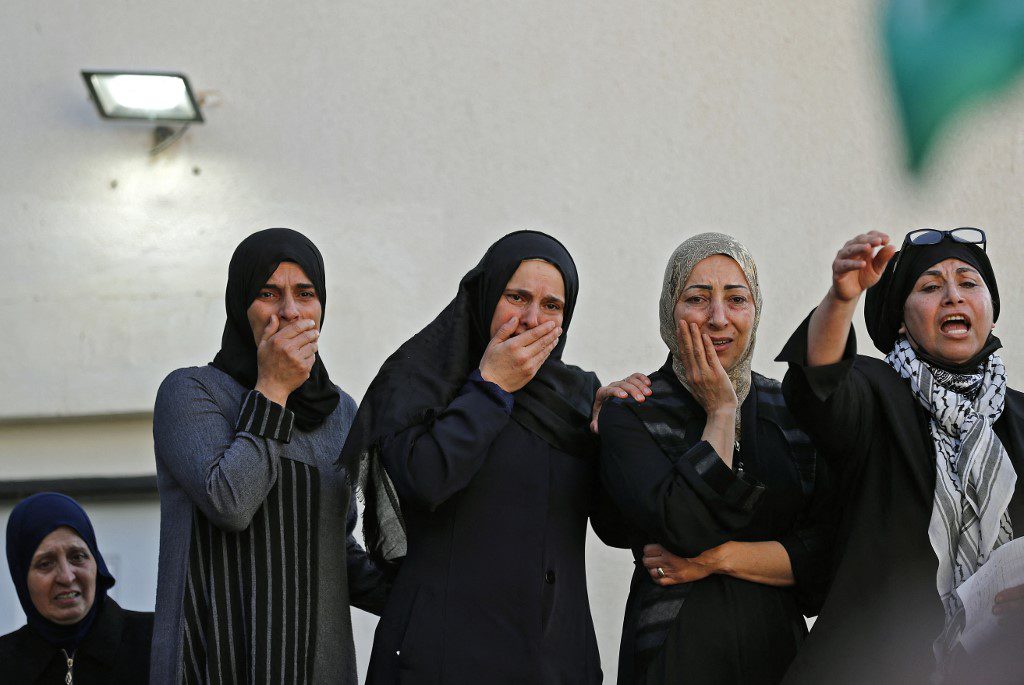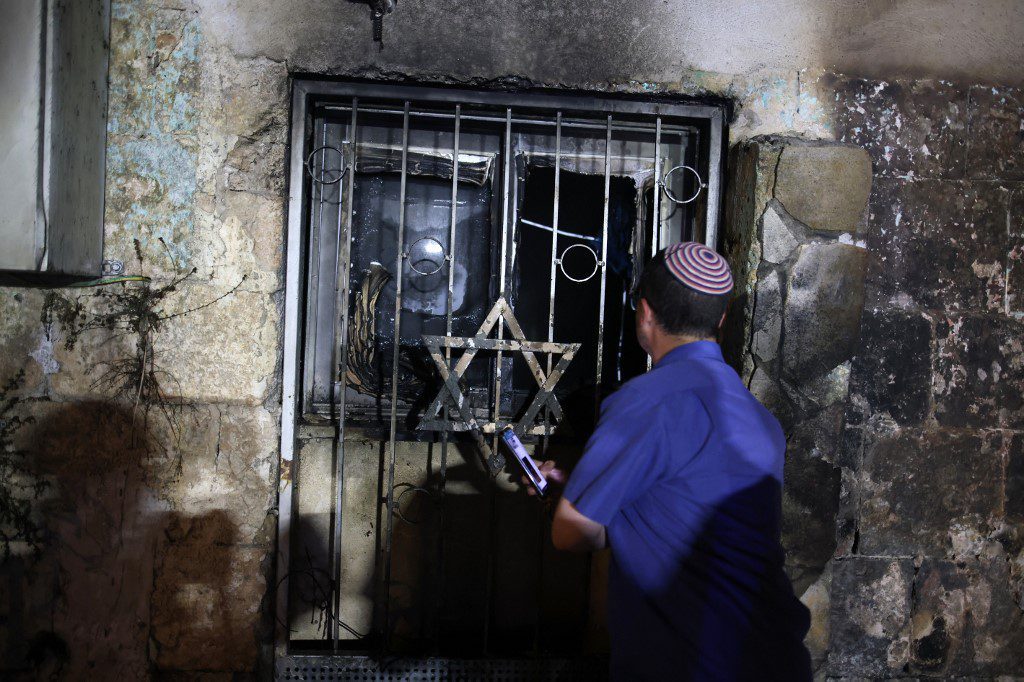
Galia Golan
Palestinians and Israelis are no strangers to violence. In fact, Israeli citizens, be they Palestinian or Jewish, are well acquainted with wars. But this time was different; things may never be the same again. The military attack was similar to previous rounds, although more rockets were fired from Gaza than in the past, and there was no Israeli army ground attack into Gaza as there had been in 2014, the most recent round. And again, once a cease fire had been arranged with the help of other countries, just about everyone – left and right-wing – knew that this would not be the last round, it would all happen again, and perhaps again.
All that said, most understand that this round was actually different; indeed it may have marked a turning point, a qualitative change, in the ongoing Israeli-Palestinian conflict. The critical change was the expansion of the attack to the ethnic communities inside Israel, communal clashes between Jewish Israelis and Palestinian Israelis living, literally, side by side in Israeli towns and cities or nearby. If anybody had thought about it, they would have known that there was discrimination of Palestinian citizens of Israel inside Israel, that the two ethnic groups were descendants of fierce enemies who had fought one another in 1948 and still tended to see each other as enemies. If one had thought about it, one would have known that education and law enforcement, land ownership and many other aspects of life were not treated, or funded, equally by the State of Israel. And tensions existed in joint towns like Lod and Yafo. And the 2018 passage of the Nation-state Law that privileged Israeli Jews over Israeli Palestinians provided an official basis for much of the existing inequality.

Still, time and again, war after war – 1956, 1967, 1973, and 1982 – and since then, Israel had fought its wars without a need to tackle, simultaneously, a rebellious domestic Palestinian population. Since Israel establishment in 1948, only one instance of violence, the second intifada of 2000, had been joined in part by local Palestinian citizens of Israel, and that had been put down almost immediately by the police shooting of Palestinian demonstrators. Generally, Israel could, and did, go to military attacks more or less confident that the 20% of its citizens, its Palestinian minority, (as distinct from the far more numerous Palestinian population under occupation in the territories conquered from Jordan in the 1967 war) would remain quiet.
This was no longer the case. In towns where Israelis and Palestinian citizens of Israel were neighbors, the so-called mixed cities of Lod and Acre or the municipality of mainly Israeli Tel Aviv and neighboring mainly Palestinian Yafo, Israelis and Palestinian citizens of Israel attacked each other, burned each other’s cars and businesses, attempted lynchings and even killed. It was not all-out civil war, but it was also not just one or two isolated incidents. This is what made this round of violence different, foreboding a possibly very different future for the country.
Some may point to exceptional circumstances: pent up frustration after a year and a half of pandemic restrictions on every one; the greater independence and assertiveness of a younger generation of highly educated Palestinian citizens of Israel, the absence of any sign of movement toward peace with the Palestinians in the occupied territories; the ongoing struggle in East Jerusalem forcing Palestinian families out of their homes in Sheikh Jarrah and settler incursions; police actions at the entrance to the old city in East Jerusalem (at the Damascus Gate) as Ramadan drew to a close; and even, the more cynical explanation of political maneuvers by Prime Minister Netanyahu. As cynical as it may sound, there were observers who explained events as an effort by Netanyahu to halt the negotiations that were progressing towards a new government coalition, replacing him as Prime Minister even as he was on trial for corruption and possibly faced with incarceration. Israel had recently held its fourth election in two years and Netanyahu was once again unable to form a coalition. The mandate had already been given by President Rivlin to opposition leader Yair Lapid, who appeared to be on his way to forming a center-left government, possibly even dependent upon an Arab party, but exclusive of Netanyahu’s Likud. Yet, while it could be argued that some, even Netanyahu, might have seen an advantage to heightened tension in order to remain in power, it was also true than Israel’s security services, with the exception of the internal security organ, the Shin Bet, did not believe Hamas would launch rockets on Israeli cities once again at this time. A new attack was not expected.
There were of course many possible explanations, catalysts, and circumstances behind the interethnic fighting that took place. All of them may have aggravated the grievances that had been building over generations, exploding now (often with assistance from Israeli settlers entering from other venues). And this was a time when the only tension anticipated was another intifada in the occupied West Bank (which did not occur) due to the absence of any sign of relief from the occupation. As noted, there were differences of opinion within the Israeli security services over expected actions from Hamas or other elements in Gaza, but on the whole the rocket onslaught by Hamas on central as well as the south of Israel had not been expected.
Thus, despite underlying tensions, for example, due to Israeli gentrification that infringed on Palestinian residential rights in Yafo, actual violence between Palestinian citizens of Israel and Israelis within Israel was not anticipated. Moreover, once such violence did break out, the police appeared to be doing little to quiet things down; massive police actions fanned the flames as far more Palestinian citizens of Israel than Israelis were arrested for violence or disturbing the peace. Even as local leaders called for calm, there remained a real possibility that the Israeli army might be deployed inside the hotspots inside Israel.
The long term damage caused by the collapse of civil calm is hard to gauge. A blow has been struck to Palestinian-Israeli coexistence, the fragility of which was now clearly exposed. Outside the vulnerable mixed towns and neighborhoods, long standing coexistence efforts may also have been fatally damaged. Recent efforts on the left to create a fully joint Palestinian-Israeli political party or to create a government coalition dependent upon the support of one or more Palestinian parties now appeared to many, even on the left, both utopian, impossible, even undesirable. Moreover, the racist claims of inimical Palestinian hostility to Israelis, propagated increasingly in recent years by the Jewish far right, now enjoyed ostensible validation. The question remains: has mutual trust suffered irreparable damage, thereby portending a sad future of civil strife for Israel?
While these questions remain unanswered for now, Israel still does not have a new government, and the possibility of a fifth election within two years is still on the table. Even if opposition leader Lapid succeeds in forming a government together with the far right wing Naftali Bennett, which now appears to be the case, and even including an Arab minister from Meretz and support of the Arab Islamist party, it is far from certain such a center-left coalition would last.
At the same time, outside forces, most notably the United States, may be willing to help maintain a cease-fire, but all the signs point to a hands-off policy of no direct involvement, no new peace plan, and no pressure on the Israeli leadership to enter genuine negotiations for peace. It is too early to guess the policies of a Lapid-Bennett government, but, in addition to Bennett’s religiously-based right wing views, to the right of Netanyahu’s Likud, it should be remembered that Yair Lapid launched his party in 2012 from the West Bank settlement of Ariel and rejected a coalition at the time with or dependent upon the Palestinian parties. In fact, in the many recent elections, the Israeli electorate has demonstrated more support for the center-right than for center-left, and the left wing parties have barely passed election thresholds necessary to enter the Knesset. It would be difficult, maybe even foolhardy, to expect from the Lapid-Bennett forces the type of compromises that are needed to end the occupation and to achieve a two state solution to the Israeli-Palestinian conflict.


